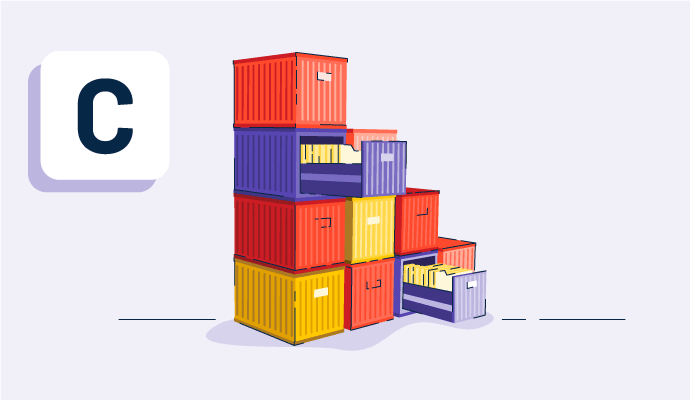What is a container registry?
A container registry consists of static files with executable code capable of creating a container on a system. Developers use these files, also known as container images, to save time when creating and delivering cloud-native applications.
A container registry acts as an intermediary for sharing container images between systems. This speeds up processes in container-based development environments. Developers primarily use two techniques here: pushing and pulling. Pushing means uploading images to the registry; pulling means downloading them.
Many developers use container registry software to manage several containers across their networks and applications.
Container registry types
Container registries let developers deploy each application service independently. There are two significant types they commonly use:
- Public registries are suitable for those who need to run their registry as quickly as possible. Individuals or small teams generally use them. They’re not an appropriate fit for bigger organizations as the team might face complex security issues like privacy and access control.
- Private registries offer security and privacy to container registries hosted remotely or on-premises. They provide advanced safety features and technical support to the organizations.
Benefits of container registry types
The container registry dedicates a location in storage to images with different tags. The tags help identify the container image in the repository. Some of its other perks include:
- Affordability. Implementing a public or hybrid container registry helps lower operational, production, and maintenance costs. Companies can save themselves the hassle of initializing multiple functions and classes from scratch every time they have to run a different operating system (OS) virtualization framework.
- Consistent performance. Pulling large images from the internet may cause performance or latency issues. However, pulling images from the repository of an organization's infrastructure makes it faster.
- Independence. When an image is pulled from the internet, the organization depends on the service provided. If the image gets compromised, it will become inaccessible. A container registry helps avoid such scenarios.
Key elements of a container registry
Individuals run queries to call, define, and modify tasks within registries. These queries commonly perform push or pull images from the central server. Below are some of the critical elements involved in the process.
- Registry hub. Data files, modules, and application programming interface (API) integration between systems depend on how the developers set the registry. They’re essential to software production and one of the first touchpoints DevOps refers to in application development.
- Static images. These are tools that can run on a virtual machine. They can exist in the same or different locations within the container registry.
- Image name and path. To retrieve the contents of container images, developers have to set the image name and path to the mainframe registry hub. The initial step in launching an image is to set environmental variables and adjust the control settings of the system.
- Container engine. Developers upload static images to the container engine temporarily, and the engine executes them in patches. They contain the images’ spare parts, such as open container images, system libraries, dependencies, and software versions.
- Dockerfile. The static images and relevant port network addresses remain in the Dockerfile once the container registry releases it. They run algorithms, define container instances, and set operating system scheduling frameworks.
- Multi-cloud container registries. They offer access keys from different cloud servers.
Best practices for implementing security in a container registry
These are some best practices developers can follow to implement security in a container registry. They help make sure these registries are safe and secure against unauthorized access.
- Access controls. Most container registries offer the users access control tools to restrict who can view the content or download the images.
- Use minimalist images. Minimalist images help save storage space. They reduce the surface attacks of applications by limiting contents to the bare minimum needed to run an application.
- Isolate the registry. As long as the registry doesn’t need to be accessible to the public, place it behind a firewall. This prevents cyber attackers from finding it.
Container registry vs. artifact registry
A container registry is used to store docker images. It supports only multiregional repositories. Businesses use container registries to manage, pull, and push images when developing cloud-native applications.
An artifact registry is an extension of the container registry. It supports both multi-regional and regional repositories. They manage both container images and non-container images and support several formats like OS packages and language packages.
Learn more about container registry and explore the one-stop solution for building cloud-native applications.

Sagar Joshi
Sagar Joshi is a former content marketing specialist at G2 in India. He is an engineer with a keen interest in data analytics and cybersecurity. He writes about topics related to them. You can find him reading books, learning a new language, or playing pool in his free time.

